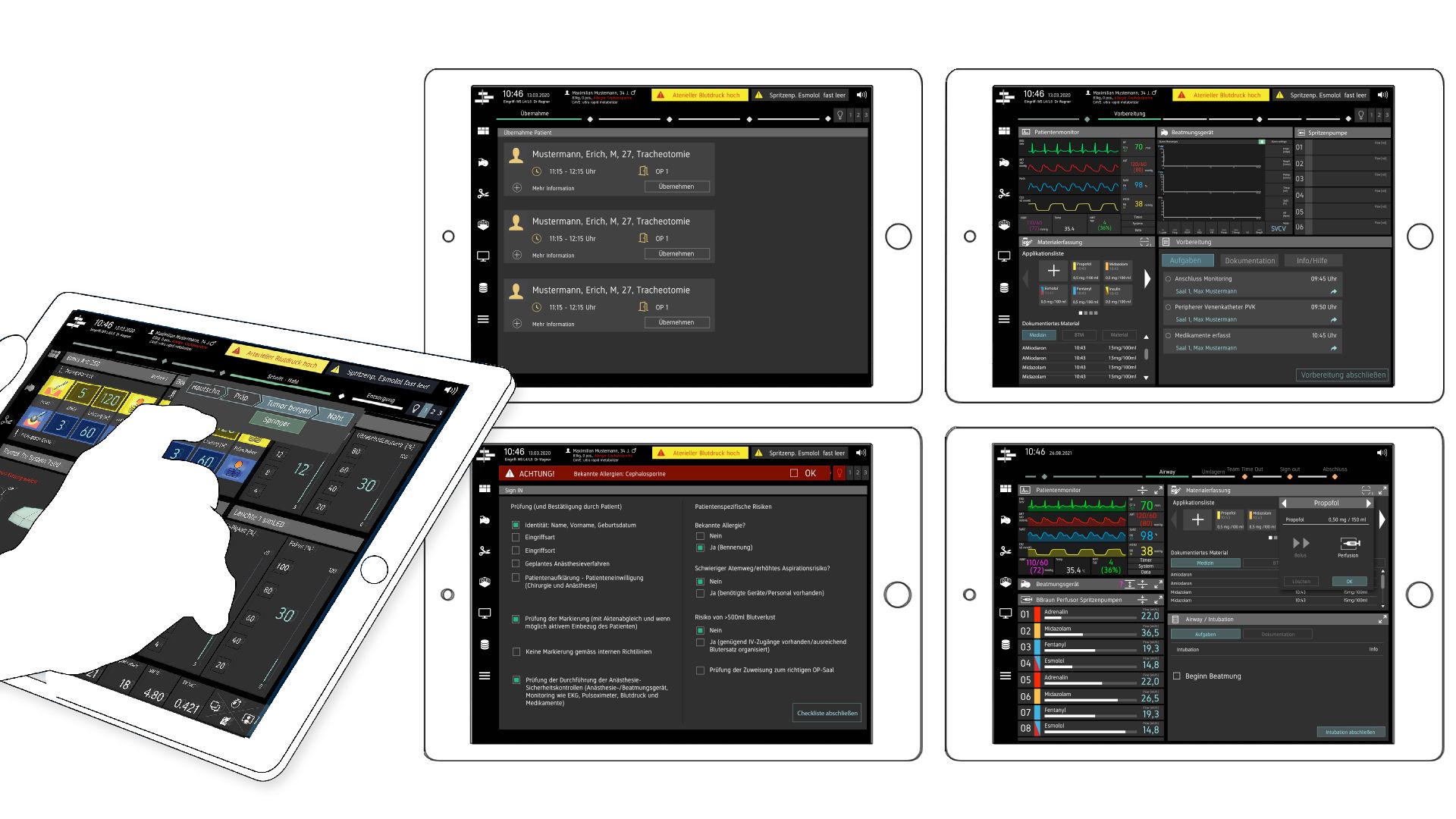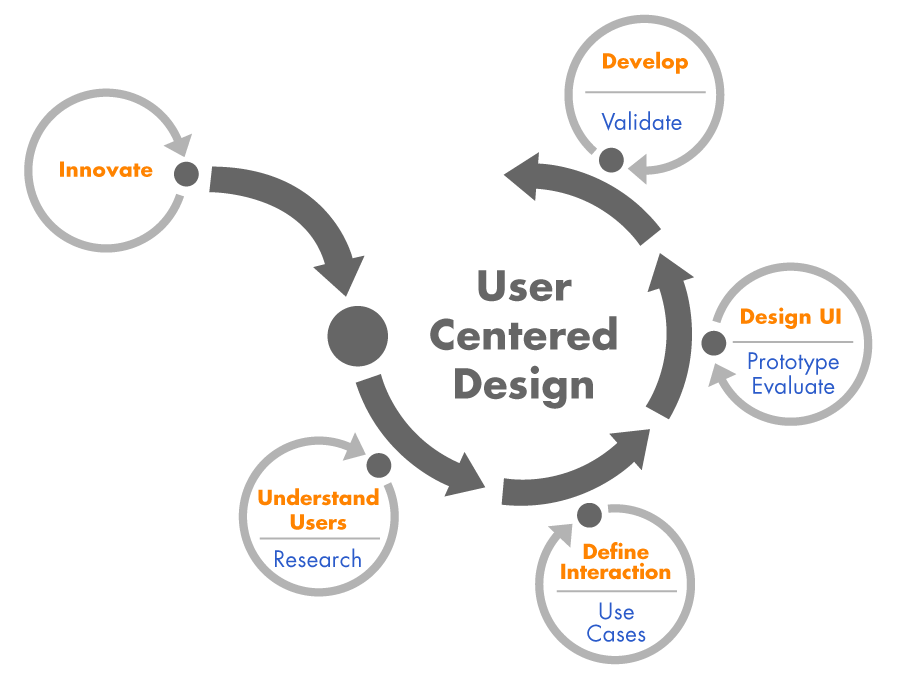x-Workstation
We are proud and pleased that BEGER DESIGN has won one of the two most important design awards this year – the iF DESIGN AWARD! Our central workstation for the integration and control of all medical devices in the operating theatre convinced the jury in the category “User Interface Concepts”.

Surgical X-WORKSTATION 4.0 Concept

User Interface Design for a SMART OR
The Surgical X-Workstation 4.0 enables for the first time a smart, manufacturer-independent network of medical technology in the operating room. However, the networking of different components in the operating room poses new challenges for the design and usability of the central technology management interface. The user interface not only integrates all medical devices in the OR but also creates a safe and user-oriented human- machine interaction in the OR, for the benefit of patient safety.
What does Surgical X-Workstation 4.0 stands for?
For more individuality
All devices can be viewed and operated as individual devices or some relevant can be grouped. These function groups can be assembled and adapted as a modular system, individually depending on the requirements for the operating step or preferences.


For a modular design
In modern operating rooms various medical devices are controlled by a single unit – our Surgical X-Workstation 4.0. The Workstation is the hub between all devices that is why it is called Surgical X-Workstation 4.0.
For an optimized workflow
• Direct access via the central control system
• improved collaboration through optimization of the OR workflow
• safe operability
• effective and efficient control in the OR
• sterile operation by the surgeon
• integration of WHO checklist

And of course for innovation
This can be found in a uniform, user-friendly and process-supporting operability by exploiting learned operating patterns of smartphones and tablets.
It is possible to switch quickly between individual device views and individual functional group views.

Who benefits?
Benefits for Surgeon and Nurses
Professor Hans Clusmann (neurosurgeon, University Hospital Aachen): „Today I once again experienced the situation in the operating theatre that we wanted to adjust the operating table because we needed a Trendelenburg positioning. But there was no one in the non-sterile area who could have made this change to the table system. The anesthetist was busy and the jumper was not in the room. And then you stand there at the table and wait and wait, one minute, …one and a half minutes until the changes to the table system can be implemented at all. Such problems occur quite frequently in the operating theatre. This applies not only to the conversion of the table system but also to other equipment that we use in the operating theatre, because we cannot intervene in the non-sterile area from the sterile area.“
In the operating theatre, most actors (operators, surgeons and nurses) are aware of the problems of missing or inadequate integration and open standards. The actors in the operating theatre are surrounded by a flood of highly specialized technology. The devices all come from different manufacturers and each device follows its own operating logic. The surgeon bears the responsibility in the room and must therefore keep all devices and their parameter settings under direct control and change their settings during the operation if necessary. OR Workstation 4.0 aim is to solve those problems.
Integrating interoperability standards to OR offers multiple new options:
• Modularity of equipment/ plug and play
• Standardized display
• User-friendly operability options even in sterile working conditions
• Individualization of device settings
• Integration of existing standards and structures
• Integration of workflow
• Context-sensitive interaction
• Customized alarms
Benefits for Hospital operators
• cost control through use of different systems in one integrated environment without being bound long-term to a specific manufacturer
• overview of systems used, including early information about faults and maintenance
• better legal position through better documentation
• safe transmission of critical information beyond manufacturer boundaries
Benefits for Companies
• market entry for smaller companies, which is now difficult or rather impossible
• legal requirements for integrated medical products, especially relating to their approval
• access to existing information due to the lack of interfaces
And most important it benefits the patient safety
Our focus is patient safety.The Surgical Workstation generates a safe and user-oriented human-machine interaction in the OR, for the benefit of patient safety. Thanks to the simple control of the entire operating room, the workflow in the OR is improved. For example, when adjusting the operating table, it is noticeable that the surgeon‘s instructions are often carried out in the opposite direction, i.e. „foot-deep“ usually becomes „head-deep“ first. In most cases this does not have any consequences, but still disturbs the course of the operation considerably and promotes the surgeon‘s desire to gain real control over his equipment. Then incorrect operation of the specialized medical equipment can also potentially endanger the patient or the surgical team. In addition, the workstation provides access to patient data and WHO security checklists.
Design aspects of Surgical X-Workstation 4.0
We put the user at the center of the design and ensure a positive and user-friendly experience. We consider psychological aspects, user habits and accessibility to develop the optimal user interface for our user group. A user interface that integrates visualization, documentation and communication throughout the diagnostic, preoperative, intraoperative and postoperative cycle.
• Easy to learn because of a uniform design for all devices.
• simple structure and flat design
• modular interface and customizable layout
• Responsive Design – Scalable for large and small devices
• Workflow Optimization

